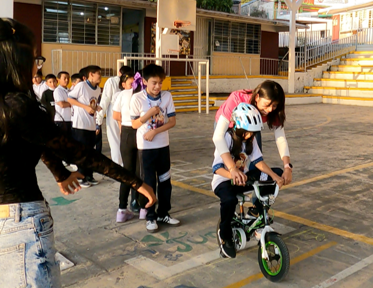Active Commuting and Emotional Well-Being: Assessing the effects of Built Environment and Social Events in Shaping Emotions
highlight_off

Active
commuting—walking, cycling, or other non-motorized travel—emerged as a
conceptual framework in the early 2000s, positioned as an extramural strategy
to augment physical activity. The built environment of the commute route – its
street connectivity, safety infrastructure, aesthetic quality, support for
independent navigation, and facilitation of movement – fundamentally influences
feelings of security, anxiety, enjoyment, boredom, competence, and
independence. Simultaneously, the rich tapestry of social encounters during the
journey – interactions with peers, family, strangers, and the community, as
well as unexpected events – directly triggers emotions ranging from joy and
excitement to fear and distress. Critically, these factors interact: the environment
sets the stage for social experiences, while social encounters color the
perception of the environment. However, there is a significant gap in knowledge
on how this interaction during the active commute influences momentary
emotional states. Addressing this gap will give base for studying how
these experiences influence emotional well-being in the longer run and inform
the creation of not only safer but also more enjoyable, socially enriching, and
emotionally supportive active commuting environments. Specifically, we
aim to analyze how the mode of transport, duration, neighborhood walkability,
companionship characteristics and social events in active commuting
independently and interactively predict real-time emotional states reported
during the commute. This investigation is situated within public
primary schools located on the urban periphery of Mexico City, a
setting characterized by constrained mobility choices and inadequate pedestrian
infrastructure. This location was selected deliberately, guided by
Salvo et al. ’s (2023) necessity-vs-choice model
of physical activity and Sheller’s (2018) mobility justice lens,
to center the experiences of children in the Global South where active
commuting is often a necessity rather than a choice, and where the urban
periphery highlights stark inequities in infrastructural provision and access
to safe mobility. The tools used for this research are questionaries, surveys
and census official data, thus the data is both qualitative and quantitative. The
methodology was designed to capture both objective and subjective
dimensions of children´s journeys, prioritizing their agency in articulating
mobility experiences. The main output of this research is an e-book summarizing
the results, and a podcast or series of video capsules for effective
communication to the public.
Sep 22-Sep
26: Revising the main survey tools and raw data already obtained
Sep 29-Oct
10: Creating the database
Oct 13- Oct
31: Analyzing the data using statistical tools
Nov 3-Nov
21: Summarizing the results and editing the e-book report
Nov 24-Dec
5: Designing the podcast or video capsules for dissemination
Dec 8-Dec
12: Publishing and promotion of the e-book and podcast/videos through social
media
20
Aleksandra Krstikj
sandra.krstik@tec.mx
active mobility
Emotional well-being
built environment
social events
commuting
urban peripheries
warning
error_outline
Research depth
40 %
Research quality and precision
40 %
Effective communication of results
20 %





:
circle
circle
circle
circle
circle